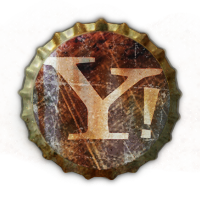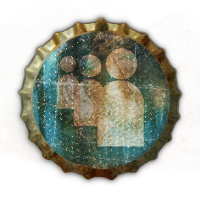2013/03/07データアイテム
Figures Of Speech Used in the Bible-【電子ブック版】
<p> You are about to download the eBook version of 'Figures of Speech Used in the Bible' by E.W. Bullinger. In this classic literary work, E.W. Bullinger catalogs and analyzes over 200 types of figures of speech utilized in the Scriptures. No other work of this type approaches the scope and knowledge that E.W. Bullinger had in this field.</p> <p> <br /> "Figures of Speech Used in the Bible" by E.W. Bullinger should be in the personal library of anyone who is serious about Bible study. It s truly one of the most useful and exhaustive of Bible study tools available on this subject.</p> <p> The writers of the Bible often used figures of speech that were common during their time. In fact, we often use figures of speech in our everyday conversations without paying much attention to it-but we do expect others to understand that we were speaking figuratively and not literally. For example, if we were to say someone is "big as a barn" we would not expect anyone to seriously think they were forty feet long, eighteen feet tall and twenty feet wide. By taking such figures of speech literally it is easy to be lead astray into false doctrines.</p> <p> The other thing the book is particularly valuable for is literary analysis. The beauty of literature sometimes is its use of various literary devices. Introverted parallelism is an example of a literary device included in the book. This is where two or more items are listed in one order and then in the reverse order. For example Exodus 9:31 where it reads "And the flax and the barley was smitten: for the barley was in the ear, and the flax was bolled." First the order is flax and then barley and then the order changes to barley and then flax. Of course there are a lot of other literary devices such as acrostics, sentences that start or end with the same words, a chapter where each verse starts with the next letter of the Hebrew alphabet, or Psalms 69 where there are 22 groups of eight verses where each of the eight verses in that group all start with the same letter.</p> <p> Whether it is examining these details of the Bible as literature or preventing an exegetic mistake by not understanding a figure of speech, "Figures of Speech Used in the Bible" is highly recommended and should be owned by all Bible students.</p> <p> <br /> About the Author:</p> <br /> <p> E.W. Bullinger was born in Canterbury, England, a descendant of the noted Swiss reformer Heinrich Bullinger (1504-1557). He was educated at King's College, London, and gained recognition in the field of Biblical languages. He was ordained in the Church of England in 1862.</p> <p> <br /> E.W. Bullinger was noted broadly for three works: A Critical Lexicon and Concordance to the English and Greek New Testament (1877); for his ground-breaking and exhaustive work on Figures of Speech Used in the Bible (1898); and as the primary editor of The Companion Bible (published in 6 parts, beginning in 1909 ; the entire annotated Bible was published posthumously in 1922). These works and many others remain in print to this day.</p> <p> <br /> In 1881, four years after the publication of the Lexicon and Concordance, Archibald Campbell Tait, Archbishop of Canterbury conferred upon Bullinger a Doctor of Divinity degree, citing Bullinger's "eminent service in the Church in the department of Biblical criticism."</p>画面が切り替わりますので、しばらくお待ち下さい。 ※ご購入は、楽天kobo商品ページからお願いします。※切り替わらない場合は、こちら をクリックして下さい。 ※このページからは注文できません。
「記事引用」
2013年03月07日 10時 木曜日feat. D.O R 続き>>
Figures Of Speech Used in the Bible-【電子ブック版】
<p> You are about to download the eBook version of 'Figures of Speech Used in the Bible' by E.W. Bullinger. In this classic literary work, E.W. Bullinger catalogs and analyzes over 200 types of figures of speech utilized in the Scriptures. No other work of this type approaches the scope and knowledge that E.W. Bullinger had in this field.</p> <p> <br /> "Figures of Speech Used in the Bible" by E.W. Bullinger should be in the personal library of anyone who is serious about Bible study. It s truly one of the most useful and exhaustive of Bible study tools available on this subject.</p> <p> The writers of the Bible often used figures of speech that were common during their time. In fact, we often use figures of speech in our everyday conversations without paying much attention to it-but we do expect others to understand that we were speaking figuratively and not literally. For example, if we were to say someone is "big as a barn" we would not expect anyone to seriously think they were forty feet long, eighteen feet tall and twenty feet wide. By taking such figures of speech literally it is easy to be lead astray into false doctrines.</p> <p> The other thing the book is particularly valuable for is literary analysis. The beauty of literature sometimes is its use of various literary devices. Introverted parallelism is an example of a literary device included in the book. This is where two or more items are listed in one order and then in the reverse order. For example Exodus 9:31 where it reads "And the flax and the barley was smitten: for the barley was in the ear, and the flax was bolled." First the order is flax and then barley and then the order changes to barley and then flax. Of course there are a lot of other literary devices such as acrostics, sentences that start or end with the same words, a chapter where each verse starts with the next letter of the Hebrew alphabet, or Psalms 69 where there are 22 groups of eight verses where each of the eight verses in that group all start with the same letter.</p> <p> Whether it is examining these details of the Bible as literature or preventing an exegetic mistake by not understanding a figure of speech, "Figures of Speech Used in the Bible" is highly recommended and should be owned by all Bible students.</p> <p> <br /> About the Author:</p> <br /> <p> E.W. Bullinger was born in Canterbury, England, a descendant of the noted Swiss reformer Heinrich Bullinger (1504-1557). He was educated at King's College, London, and gained recognition in the field of Biblical languages. He was ordained in the Church of England in 1862.</p> <p> <br /> E.W. Bullinger was noted broadly for three works: A Critical Lexicon and Concordance to the English and Greek New Testament (1877); for his ground-breaking and exhaustive work on Figures of Speech Used in the Bible (1898); and as the primary editor of The Companion Bible (published in 6 parts, beginning in 1909 ; the entire annotated Bible was published posthumously in 1922). These works and many others remain in print to this day.</p> <p> <br /> In 1881, four years after the publication of the Lexicon and Concordance, Archibald Campbell Tait, Archbishop of Canterbury conferred upon Bullinger a Doctor of Divinity degree, citing Bullinger's "eminent service in the Church in the department of Biblical criticism."</p>画面が切り替わりますので、しばらくお待ち下さい。 ※ご購入は、楽天kobo商品ページからお願いします。※切り替わらない場合は、こちら をクリックして下さい。 ※このページからは注文できません。
「記事引用」
2013年03月07日 10時 木曜日feat. D.O R 続き>>
PR
Comment
コメントの修正にはpasswordが必要です。任意の英数字を入力して下さい。
カレンダー
フリーエリア
最新コメント
最新記事
(05/11)
(05/11)
(05/11)
(05/10)
(05/10)
プロフィール
HN:
sihobisa03
性別:
非公開
ブログ内検索
最古記事
(11/13)
(11/14)
(11/14)
(11/14)
(11/14)
P R








